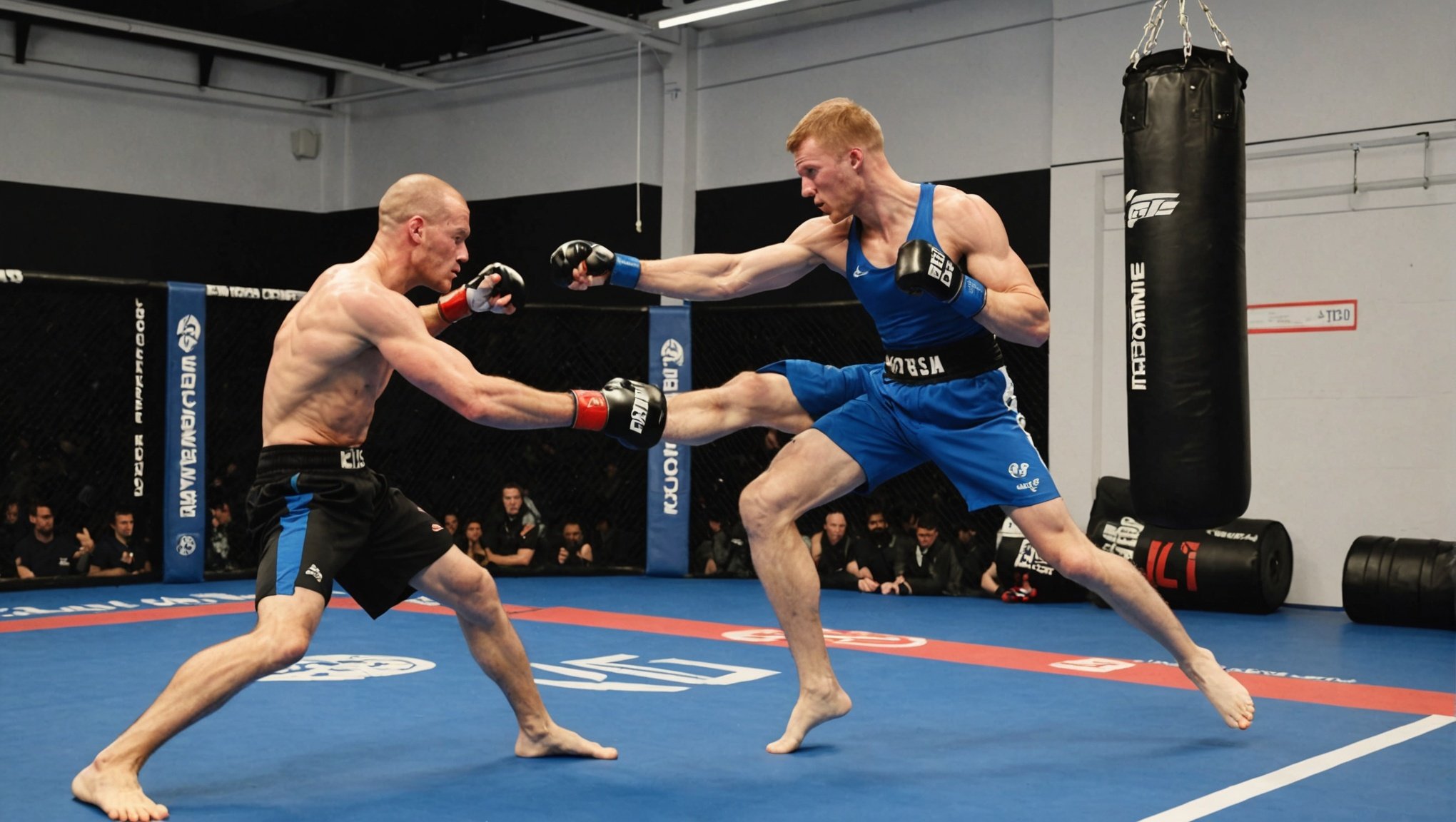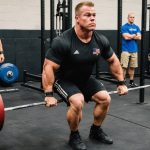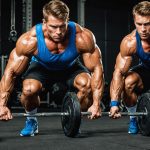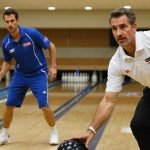The Importance of Biomechanics in Defensive Training
Understanding biomechanics is crucial for improving defensive training in combat sports. At its core, biomechanics examines how the body moves and operates, providing insights that are invaluable for fighters. Key principles include movement efficiency, force distribution, and body mechanics, all essential for effective defense against opponents.
Incorporating biomechanics into defensive training plays a significant role in injury prevention and performance enhancement. By analysing movement patterns, trainers can identify areas where an athlete might be prone to injury. For instance, improper alignment during a defensive maneuver can lead to undue stress on joints or muscles. Correcting these movements not only helps in preventing injuries but also enhances an athlete’s fight performance, as they learn to conserve energy and execute techniques more effectively.
Topic to read : Elevating Match Strategy: Proven Techniques for UK Kickboxers to Enhance Tactical Thinking
Currently, there’s a growing trend in combat sports where trainers increasingly apply biomechanics with advanced technological tools. Motion capture systems and force measurement technologies are becoming standard in assessing and refining fighters’ defensive tactics. This data-driven approach allows for precise, tailored training protocols that address individual weaknesses, ultimately leading to better defensive skills and more wins in the ring. As the field continues to evolve, the integration of biomechanics remains a cornerstone of modern defensive training strategies.
Case Studies of UK Fighters Utilizing Biomechanics
Understanding the application of biomechanics in the training regimens of UK fighters reveals intriguing patterns of growth and success. By examining this intersection, we uncover how cutting-edge techniques elevate athletes’ performances.
Also read : Unlocking Peak Performance: Boosting Joint Mobility for UK Combat Sports Athletes
Notable UK Fighters and Their Training Regimens
Many prominent UK fighters have incorporated biomechanics application into their daily routines. This strategic approach helps them refine movements, enhance efficiency, and minimise the risk of injuries. Fighters report noticeable improvements in their agility and power since adopting these methods, attributing success to their scientific training processes.
Analysis of Specific Biomechanical Techniques in Training
Biomechanical techniques such as motion capture analysis and force plate testing are crucial in crafting bespoke training plans. These methods provide insights into fighters’ biomechanics, allowing coaches to optimise techniques for better results. For instance, muscle symmetry evaluations guide targeted strength conditioning, ensuring fighters achieve a balance of power and precision.
Testimonials from Fighters and Coaches
Coaches affirm that incorporating biomechanics transforms their training strategies, aligning them with an athlete’s unique physicality. Testimonials from fighters and coaches highlight increased performance and reduced injury rates. Fighters describe a deeper understanding of their bodies, enabling strategic adaptations in both preparation and execution. Through the synergy of biomechanics application and practical training, the path to peak performance becomes more achievable.
Practical Training Techniques Incorporating Biomechanics
Incorporating biomechanics into training techniques can significantly enhance both efficiency and performance. Biomechanics drills focus on optimising body mechanics and movement patterns to boost athletic proficiency. A few recommended exercises include plyometric drills for explosive strength, balance board exercises for stability, and agility ladders for foot speed and coordination.
The integration of technology is transforming the landscape of biomechanical training. Video analysis and motion tracking provide athletes with detailed insight into their movement patterns. Through this technological lens, professionals can scrutinize each step or swing with exceptional precision. This allows for real-time feedback, facilitating immediate adjustments that lead to performance improvement.
Feedback is critical in biomechanical training. It serves as the cornerstone for continuous improvement and performance enhancement. Receiving constructive evaluations enables athletes to understand areas needing refinement and paves the way for personalised adjustments. Adjustments can involve changes in posture, timing, or the introduction of new drills to address specific weaknesses.
To summarise, training that leverages biomechanics, coupled with advanced technology, provides a comprehensive approach to athlete development. By focusing on precise movement patterns and integrating feedback, athletes can continuously refine their craft, ultimately reaching new levels of performance.
Research Findings on Effectiveness of Biomechanics in Combat Sports
Recent biomechanics research has significantly altered how we understand combat sports’ dynamics. By delving into the intersection of human movement and sports science, these studies aim to enhance training effectiveness in fighters.
Summary of Recent Studies on Biomechanics in Fighting
Studies focusing on biomechanics in fighting emphasize the importance of sports science in optimizing performance and reducing injury risks. By analysing fighters’ movements through sophisticated tools, researchers identify key areas of improvement. For example, understanding the mechanics of a punch or kick can help athletes increase their power while maintaining balance and coordination.
Impact Assessment of Biomechanical Training Programs
Biomechanical training programs are game-changers in combat sports, as they tailor exercises to an individual’s specific movement patterns. Athletes engaging in such programs often report improved agility and power. By systematically altering factors like stance, leverage, and force application, fighters can develop more efficient techniques and fine-tune their in-ring strategies.
Future Directions for Research in Biomechanics and Combat Sports
While current biomechanics research offers invaluable insights, future studies should explore its evolving role in training processes. One promising area is integrating personalized analytics and AI, providing fighters with real-time feedback. This could revolutionize how athletes understand and refine their movements, unlocking their full potential.
Expert Opinions on the Role of Biomechanics
Understanding biomechanics in sports can be enriched through expert insights and coaching perspectives. Interviews with biomechanics experts reveal how the science of movement informs athletic performance, highlighting that these experts consider biomechanics not just as a tool for analysis but an integral part of comprehensive coaching portfolios. Their expertise uncovers how precise movements and postures can translate into performance efficiency, injury prevention, and enhanced athletic prowess.
From the viewpoint of renowned coaches, the fusion of biomechanics into their training philosophy is invaluable. They find that integrating these insights helps tailor training programs to the specific needs and physiology of athletes. This custom approach elevates training effectiveness and aligns with the philosophy of developing athletes’ potential holistically.
However, misconceptions and challenges persist in the broader adoption of biomechanical strategies. A common hurdle is the misinterpretation of biomechanical data, where coaches might find themselves overwhelmed by information. Overcoming these involves fostering a collaborative dialogue between experts and coaches, ensuring that the nuances of data translate into actionable coaching strategies. Additionally, coaches emphasize the importance of continuous education and embracing evolving technologies, recognising that this harmony between expert insights (biomechanics) and coaching perspectives maximises the benefits to athletes.
Visual Aids and Resources
Navigating the complex landscape of sports biomechanics can be greatly enhanced with the right training resources, utilising a blend of visual aids and educational materials. When it comes to understanding the nuances of biomechanical principles, these tools are invaluable.
Diagrams Illustrating Biomechanical Principles
Diagrams serve as a fundamental educational material in illustrating biomechanics. They visually depict complex movements and highlight key areas such as torque, balance, and joint motion. Through these visual aids, learners can clearly perceive how muscles interact during movement. This method simplifies complicated concepts, transforming them into accessible training resources.
Recommended Videos and Tutorials on Defensive Techniques
For hands-on understanding, educational videos and tutorials offer step-by-step guides in mastering defensive techniques. Whether one is just starting out or seeking to refine existing skills, visual content brings these movements to life, illustrating not just the ‘how’ but also the ‘why’ behind each technique. These resources can effectively bridge the gap between theory and practice.
Key Texts and Studies for Further Reading
To deepen one’s grasp, referring to established texts and studies provides a thorough foundation. Such educational materials deliver insights from experts and report on the latest research in front-line studies. This approach caters to those wishing to engage with more detailed and data-driven learning, complementing other training resources.













